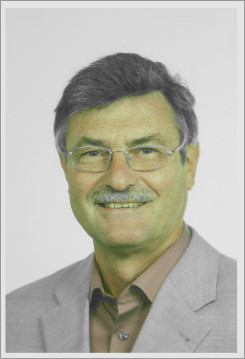


In electron transfer processes, spin effects are usually seen either in magnetic materials or in systems containing heavy atoms that facilitate spin-orbit coupling. Here we present spin-selective transmission of electrons through self-assembled monolayers of double-stranded DNA on gold and bacteriorhodopsin on gold and aluminum. In these experiments we show that electrons photoemitted from a substrate surface and transmitted through a monolayer of self-assembled chiral double-stranded DNA and bacteriorhodpsin molecules are highly spin-polarized. Since photoelectrons excited by linearly polarized, normally incident light on a gold surface are not spin polarized, these molecules act as very efficient spin filters achieving a polarization of up to 60% (DNA) [1] and 22% for bacteriorhodopsin. Because of the low atomic numbers of the constituents of DNA (P C, H) and bacteriorhodopsin (C, N, H) simple, spin-orbit-coupling is not sufficient to explain the observation of the quite large spin-specific interaction. Different models from various groups try to rationalize the observed effect [2], but it is not really understood so far.
[1] B. Göhler et. al, Science 331, 894 (2011).
[2] R. Gutierrez et al. Phys. Rev. B 85, 081404 (2012).



In electron transfer processes, spin effects are usually seen either in magnetic materials or in systems containing heavy atoms that facilitate spin-orbit coupling. Here we present spin-selective transmission of electrons through self-assembled monolayers of double-stranded DNA on gold and bacteriorhodopsin on gold and aluminum. In these experiments we show that electrons photoemitted from a substrate surface and transmitted through a monolayer of self-assembled chiral double-stranded DNA and bacteriorhodpsin molecules are highly spin-polarized. Since photoelectrons excited by linearly polarized, normally incident light on a gold surface are not spin polarized, these molecules act as very efficient spin filters achieving a polarization of up to 60% (DNA) [1] and 22% for bacteriorhodopsin. Because of the low atomic numbers of the constituents of DNA (P C, H) and bacteriorhodopsin (C, N, H) simple, spin-orbit-coupling is not sufficient to explain the observation of the quite large spin-specific interaction. Different models from various groups try to rationalize the observed effect [2], but it is not really understood so far.
[1] B. Göhler et. al, Science 331, 894 (2011).
[2] R. Gutierrez et al. Phys. Rev. B 85, 081404 (2012).